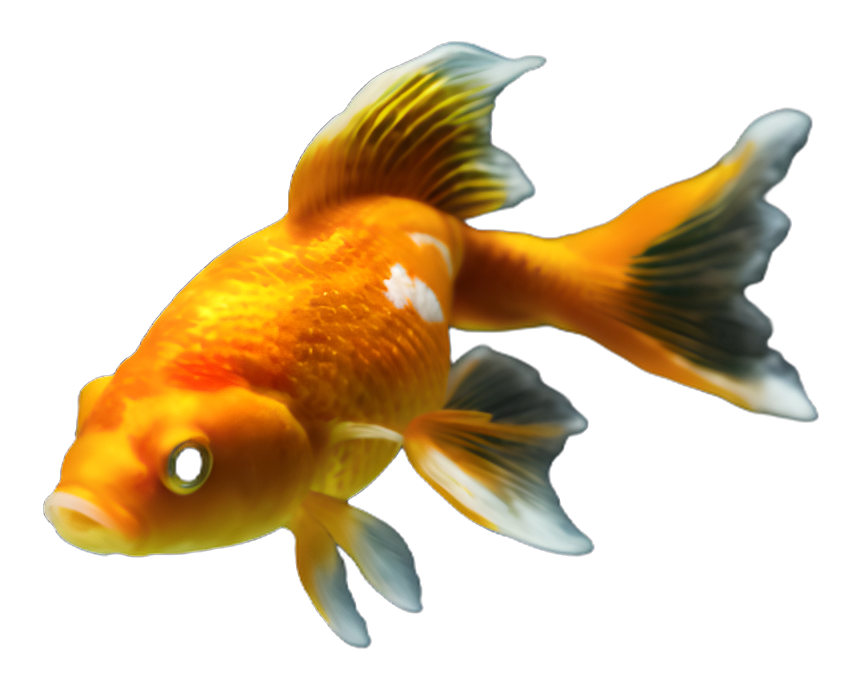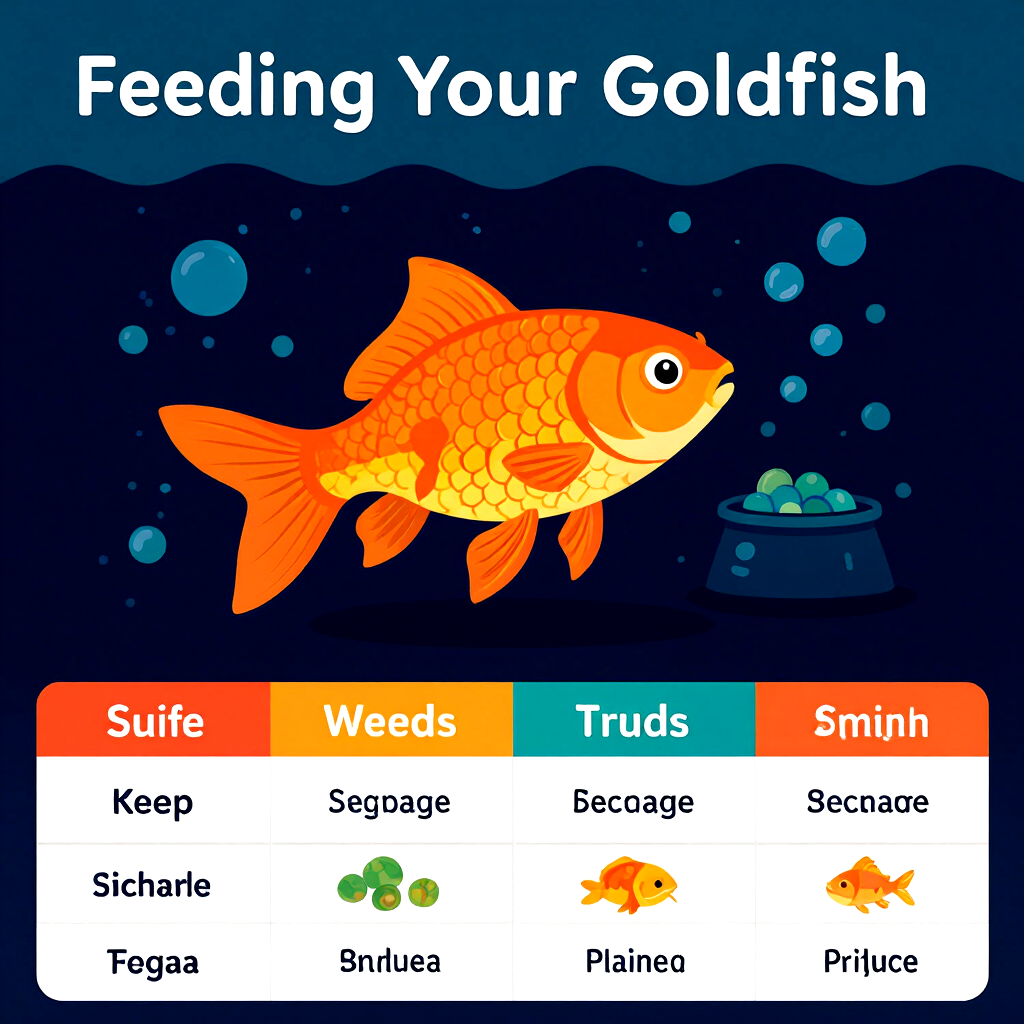Introduction 🐠
Feeding your goldfish can be one of the most rewarding daily rituals for any fish owner. Imagine the bright flash of colors as your goldfish eagerly approaches at feeding time, signaling to you its excitement and trust. This small but significant interaction not only nourishes your pet but greatly impacts its health and happiness. When you feed your goldfish the right foods in the right amounts and establish a consistent feeding schedule, you pave the way for improved growth, more vibrant colors, and a longer, healthier life for your aquatic friend.
This article will guide you through choosing the best foods for your goldfish and developing an effective feeding routine. We’ll explore the types of foods best suited to goldfish nutrition, the how-to’s of feeding amounts and timing, and practical tips to sidestep common feeding mistakes. Whether you’re new to goldfish care or looking to refine your feeding strategy, this guide will help you provide your pet the optimal diet and care it deserves.
Understanding Goldfish Nutrition Needs 🍽️
To ensure your goldfish thrives, it’s essential to understand its basic nutritional requirements. Goldfish need a well-balanced diet comprising proteins, carbohydrates, fats, vitamins, and minerals. These nutrients fuel their energy needs, support growth, maintain vibrant colors, and sustain overall health.
In the wild, goldfish feed on a natural variety of foods including aquatic insects, larvae, small crustaceans, plants, and algae. This diverse diet naturally provides a balance of nutrients, something we aim to replicate in home aquariums.
Commonly available goldfish foods can be broadly classified into several types:
- Flakes – Convenient and fortified with essential vitamins.
- Pellets – Often denser and designed to sink or float, offering more substantial nutrition.
- Live foods – Brine shrimp, daphnia, and bloodworms supply high protein and stimulate natural feeding behaviors.
- Frozen foods – Nutritionally comparable to live foods but more convenient and safer from parasites.
- Vegetables – Peas, lettuce, and spinach provide fiber and important micronutrients.
A balanced diet combining these food types helps ensure your goldfish receives comprehensive nutrition, promoting their well-being at every stage of life.
Best Foods for Your Goldfish 🥕🦐
Choosing the best food for your goldfish involves selecting items that supply the right nutrition while matching your fish’s preferences and your maintenance capabilities. Here is a detailed look at excellent food options:
Commercial Foods:
- Flakes: These are easy to portion and usually fortified with essential vitamins and minerals. Use flakes as a staple diet, feeding 1-2 times daily. To prevent overfeeding, offer only what your goldfish can consume in 2-3 minutes.
- Pellets: Ideal for goldfish that prefer sinking food, pellets are more nutrient-dense than flakes. Soaking pellets briefly before feeding helps prevent bloating, a common digestive issue.
- Enhanced vitamin pellets: Some pellets come with added supplements like carotenoids that enhance goldfish’s color and immune system.
Natural Foods:
- Live foods: Brine shrimp, daphnia, and bloodworms are excellent protein sources that encourage natural foraging. Use live foods as occasional treats—about once or twice a week—to boost vitality.
- Frozen foods: An excellent alternative to live foods, frozen brine shrimp or bloodworms retain nutrition and reduce risk of disease.
- Vegetables: Blanched peas, shredded lettuce, spinach, and zucchini provide fiber and essential vitamins. Peas are particularly useful for aiding digestion and preventing swim bladder problems.
Important feeding tips: Avoid overfeeding at all costs. Excess food leads to water pollution and health risks. Also, refrain from feeding bread or human food as it lacks nutritional value and can harm your goldfish.
Feeding Schedule and Tips ⏰
Creating a practical and thoughtful feeding schedule is key to maintaining your goldfish’s health. Here’s how to determine feeding frequency and quantities:
- Frequency: Feed young goldfish 2-3 times a day while adults do well with 1-2 feedings. Avoid continuous or irregular feeding to reduce overfeeding and tank waste buildup.
- Portion control: Offer only as much food as your goldfish can eat within 2-3 minutes. This typically equates to a small pinch of flakes or a few pellets per feeding.
- Observe appetite: Watch for signs of hunger such as active swimming near feeding time or nibbling at food, and signs of fullness like disinterest during feeding sessions.
- Maintain consistency: Feed at the same times daily. Dividing meals into smaller portions helps reduce wasted food.
- Remove leftovers: Remove uneaten food promptly to prevent water contamination.
- Seasonal adjustments: During cooler months, goldfish metabolism slows—reduce feeding frequency accordingly. In warmer seasons or growth phases, increase portions moderately.
FAQ Section ❓
How much food is too much?
Any food uneaten within 2-3 minutes is too much. Overfeeding causes obesity and water quality problems.
Can goldfish eat bread or human food?
No. Bread and many human foods are not nutritionally suitable and can cause digestive issues.
Is it okay to fast your goldfish sometimes?
Yes. Fasting once a week helps clear their digestive system and prevent bloating.
How to tell if your goldfish is overfed or underfed?
Overfed goldfish may appear bloated and lethargic; underfed fish may be thin and less active.
What are the best vegetables for goldfish?
Blanched peas, lettuce, spinach, and zucchini are excellent and safe vegetable options.
Conclusion 🎯
Feeding your goldfish with a well-rounded diet and sticking to a solid feeding schedule profoundly impacts its health, coloration, and longevity. By understanding the nutritional needs of goldfish and selecting the best foods—from flakes and pellets to natural live and vegetable foods—and feeding appropriately, you maximize your pet’s quality of life.
Remember each goldfish is unique, so observing your fish and adapting feeding routines is key. If possible, consulting with aquatic veterinarians can provide personalized advice to optimize care.
This feeding guide especially benefits beginner and intermediate goldfish owners seeking to foster healthier, happier fish. Implement these feeding strategies and watch your goldfish thrive into a beautiful, vibrant companion for years to come!

